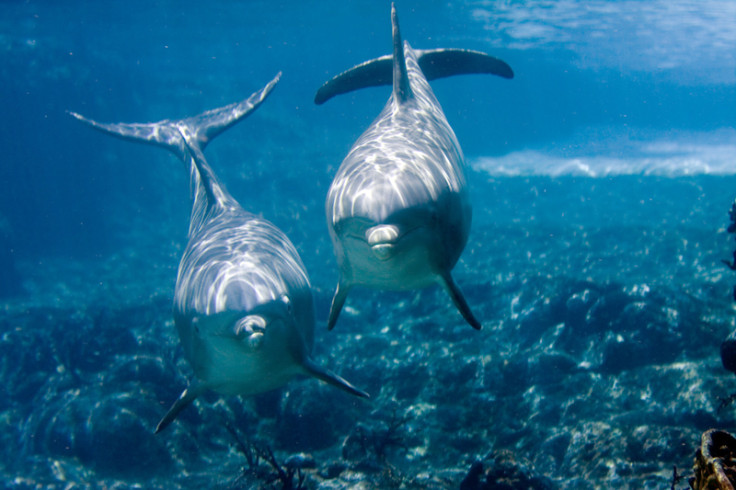Swimming too fast from danger exposes dolphins to another threat - being stranded on a beach
Scientists have compared the costs of different swimming styles to dolphins and whales.
Dolphins and beaked whales are particularly vulnerable to oceanic noise pollution produced by humans.
But escaping these noises is never easy, as marine mammals face the challenge of balancing their energy demands with their finite oxygen supply when they flee, scientists have said. The animals who struggle may end up stranded on beaches.
Dolphins and beaked whales appear more at ease when swimming slowly. They adopt a leisurely burst-and-glide style during a routine dives. When evading peril however, scientists have observed that these mammals beat their fins continually to swim full-out and may struggle to stop.
"Mammal regardless of size routinely swim at comparatively slow preferred speeds that promote an economy of movement. Even the most active dolphins and largest whales tend to cruise within this range. However, there are many occasions when high-speed swimming is demanded by free-ranging marine mammals", the scientists note.
In their study now published in the Journal of Experimental Biology, they have compared how much energy each swimming style uses and how much energy a startled animal uses when evading peril.
"Amazingly, there has been only a handful of studies that have actually measured the energetic cost of a dive for dolphins or whales", lead author Terrie Williams, from the University of California Santa Cruz (USA), points out.
Dolphin training
In the first part of the study, the researchers trained six bottle-nose dolphins over a period of six months so that they would participate in swimming tests that would allow for the measurement of the metabolic costs of the different swimming styles.

One test involved the animals swimming at their most comfortable speed while pushing against a force plate in the wall of the pool as the researchers filmed the number of fin beats. Another test focused on the dolphins as they dived down 10 m wearing a fin-beat tracker and swam through a series of hoops before returning to the surface.
The scientists were able to measure the metabolic cost of each dive by training the animals to surface in an air dome where the amount of oxygen they inhaled was recorded. They found that swimming at the fastest speed doubled their metabolic cost, compared to when they swam at their preferred, slower speed.
The team then specifically looked at the impact of noise pollution on beaked whales, who are particularly sensitive to the noises made by sonars. They used previous recordings made of the whales reactions to a loud sonar which revealed that the whale's fin-beat pattern increased significantly from 13.6 to 17strokes/min as they escaped.

Using this data, Williams calculated that the startled animals would use 30.5% more energy as their metabolic rate rocketed to power the beats of their fins.
The problem was that the whales did not recover quickly from this. They continued to swim quickly, with costly fin beats during almost two hours after escaping the noises. Their inability to stop swimming quickly puts them at risk of reaching a beach and being stranded there.
Williams concludes: "Not all strokes are the same in terms of energy expenditure for swimming dolphins, and this has enormous implications for the cost of flight from averse stimuli by wild cetaceans. In view of the number of cetacean mass strandings across the globe and the increase in human presence in the oceans, such data are critical. The animals in our care provided that opportunity".
© Copyright IBTimes 2024. All rights reserved.






















